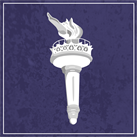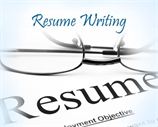You’re considering a new opportunity—good for you! So, you pull out the old resume and think, “I just need to add my last job, and it’s ready to go, right?”
…Um…not so much…It probably needs a lot more work…first, you’ll need to age-proof that resume!
“Come on…” you may be thinking, “They can’t see my wrinkles on a resume!” Well, they sort of can…
Here are three items you’ll need to review, to ensure they don’t imagine the scent of Bengay wafting from your resume pages.
1) Dusty Dates
Let’s start with the major dead-give-away: Dates! If you write that you graduated from Columbia University in 1977, the person reading your resume might think you graduated with Alexander Hamilton (Columbia’s class of 1777.) Yes, I know you’re proud of that fine institution, and you can (and should) keep your degree on your resume—including your major (only if relevant) and “Magna Cum Laude” (if earned.) Just delete that darned date!
The same can be said for other dates on your resume. Let’s say you’re pleased to have worked at IBM back in the 90’s. But probably anything you did for the prestigious Big Blue involves an obsolete technology, process or practice. Instead, consider lumping all of your jobs prior to 2000 under the heading of “Related Prior Experience.”
2) Fossilized Formatting
Remove the following from your header right now: street address, home phone and any email address that ends with aol.com or Hotmail.com. While you’re at it, scratch the section called “Objective” and the disclaimer at the bottom that reads, “References Available Upon Request.” Now, here’s what you need, instead:
Contact Information
The Header of your resume should list Your Name (Large, Loud and Proud,) your cell phone, your email address (which should be yourname@gmail.com; not CoolGranny1960@sbcglobal.net.)
Professional Summary
On a modern resume, this section replaces what used to be the Objective. As with any executive summary, you will write this last, and will not use “Professional Summary” as the section title—that’s like titling your top section, “Header.” Instead, use your targeted job title such as “Registered Nurse,” “Information Technology Leader” or “Operations Manager.”
Reference
These are a waste of valuable space on a resume. Save this separate document for the interview.
3) Old-School Skills and Technology
Remove any references to technologies that will show you worked in the dark ages. These might include the words “typing” (now “keyboard skills”) or Lotus 123 (Yes—I miss it too—but you now have mad Excel skills, don’t you?) Don’t mention your COBOL knowledge, either. As with everything on your resume, if it’s not currently relevant, it should not be there.
Following this check-list can help you present yourself as a ‘Thoroughly Modern Madison’! And although a great resume cannot get you the job, it can help you garner that first phone call—and hopefully, a face-to-face interview. And, yes, there are ways to age-proof that interview meeting as well, but first things first.


